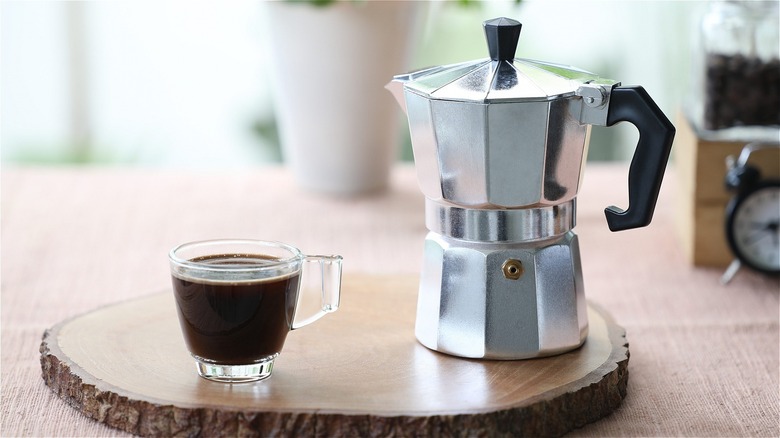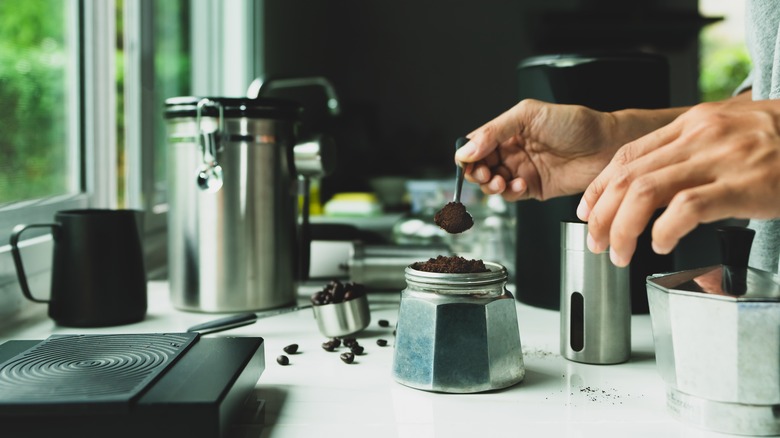The Biggest Mistake You're Making When Using A Moka Pot
The Bialetti Moka pot is a design classic. Created by Alfonso Bialetti in 1933 as a way to make a quick cup of espresso-style coffee at home, the moka pot paved the way for coffee to move out of public coffee houses and into domestic life. Alfonso's son, Renato, eventually took over the family business, and by the time he passed away in 2016, you could find his father's invention in 90% of Italian households. Part of the beauty of the moka pot is its uncomplicated design that simultaneously creates a more connected coffee experience than a pod machine. The other side of that coin, however, is that the moka pot's promise can fool you into burning your coffee before it's even hit your cup.
Before hipsters discovered single-origin beans and weighing every new piece of coffee equipment, innovation in coffee was about one thing — speed. The key to espresso's success is in the name — express to consume, but also express to make. But trying to rush your Moka pot can lead to bitter, burnt-tasting coffee. The greater the heat, the quicker the water will boil and the quicker you'll be caffeinated. However, using high temperatures like this makes it much harder to spot the point at which you need to remove the Moka pot from the heat — resulting in the common misconception that Moka pot coffee always tastes burnt! In fact, people who think this may have simply been using their Moka pot wrong.
What happens if you over-tamp Moka pot coffee?
Higher brewing temperatures promise speed at the expense of taste — but dialing it too low will also lead to lackluster coffees. The ideal temperature for water to extract the flavor from coffee is 195 to 205 degrees Fahrenheit. Much lower and the fullness and richness of the flavor won't be imparted as it flows through the ground coffee, instead, you'll have a cup of weakly bitter, brown water.
Keeping your Moka pot at target temperature is easier said than done. Fortunately, there are a few best practices that can help you control the power flowing through your coffee pot. Use pre-boiled water when filling the bottom chamber of the Moka pot. This means the slight inconvenience of using a towel or oven mitt to handle the pot, as it'll be hot even before you put it on the stove, but it'll give you much quicker and more consistent brewing.
The Moka pot brewing process should be short and sweet. Using hot water, the coffee will start brewing almost immediately, and you'll be able to remove the pot from the heat within a minute or so. Remove the pot from the heat quickly after you see wisps of steam escaping to avoid burnt flavors. Some even go as far as chilling the base of their Moka pots with cold water. This cool-down step also helps prevent the coffee from developing a metallic taste.

